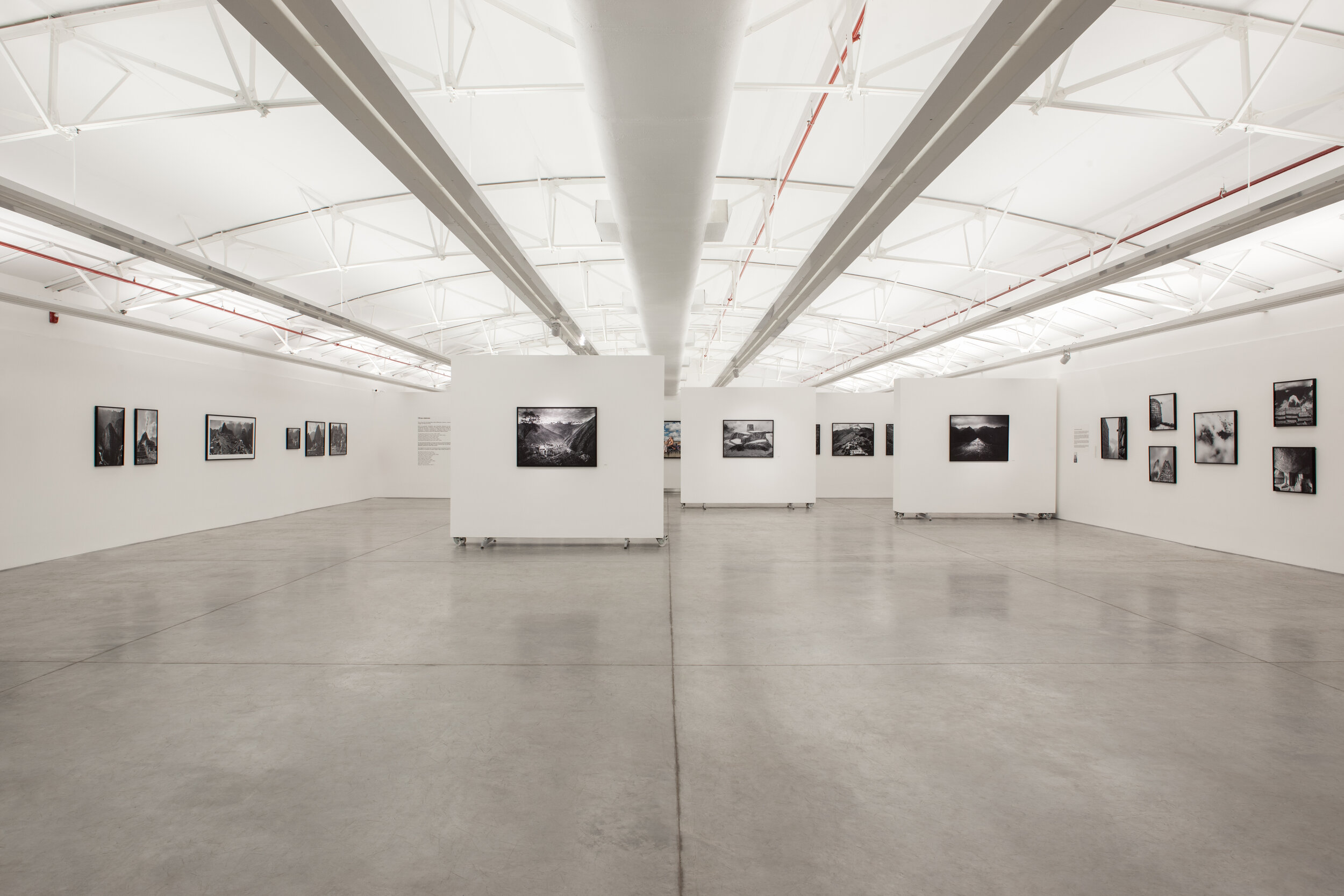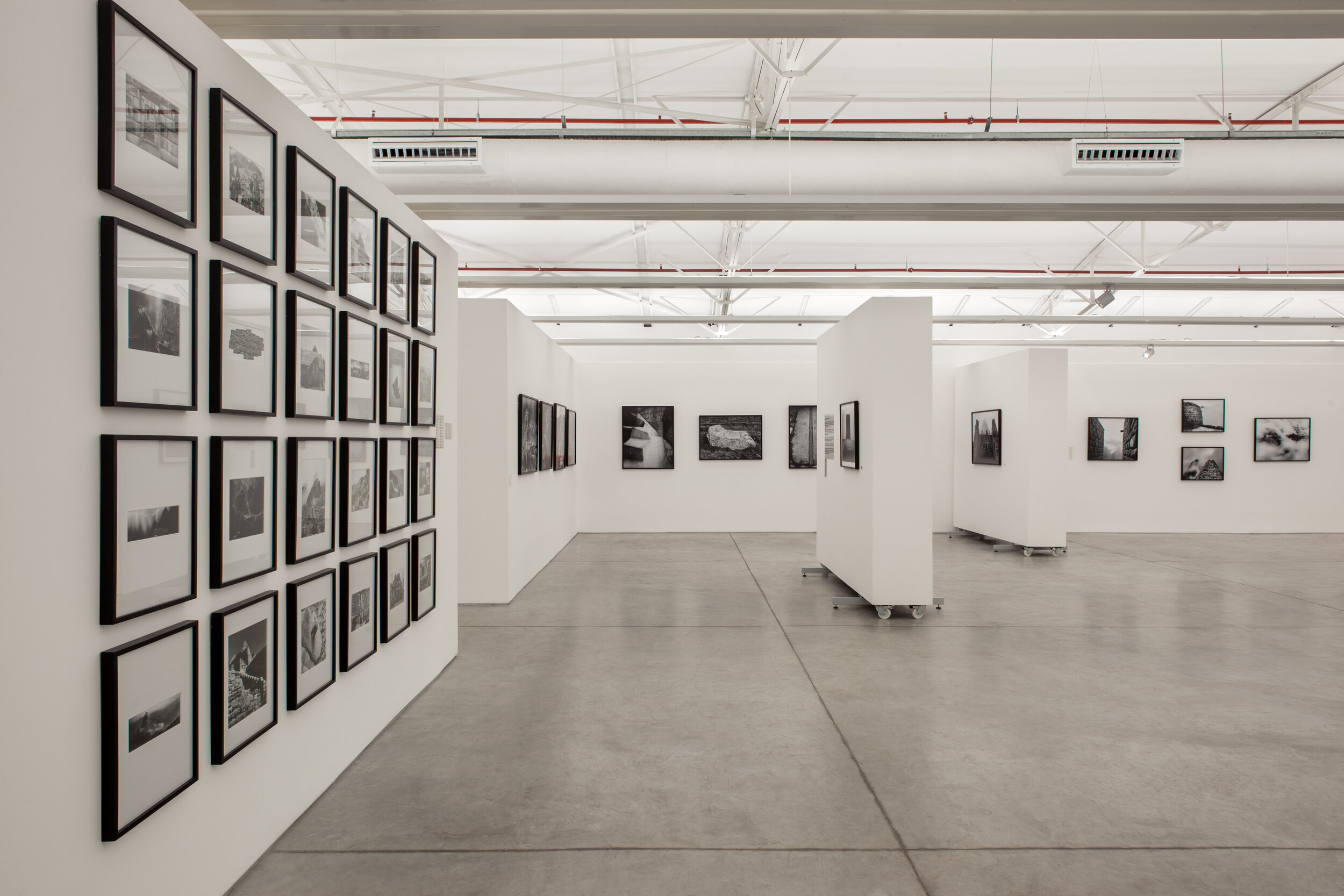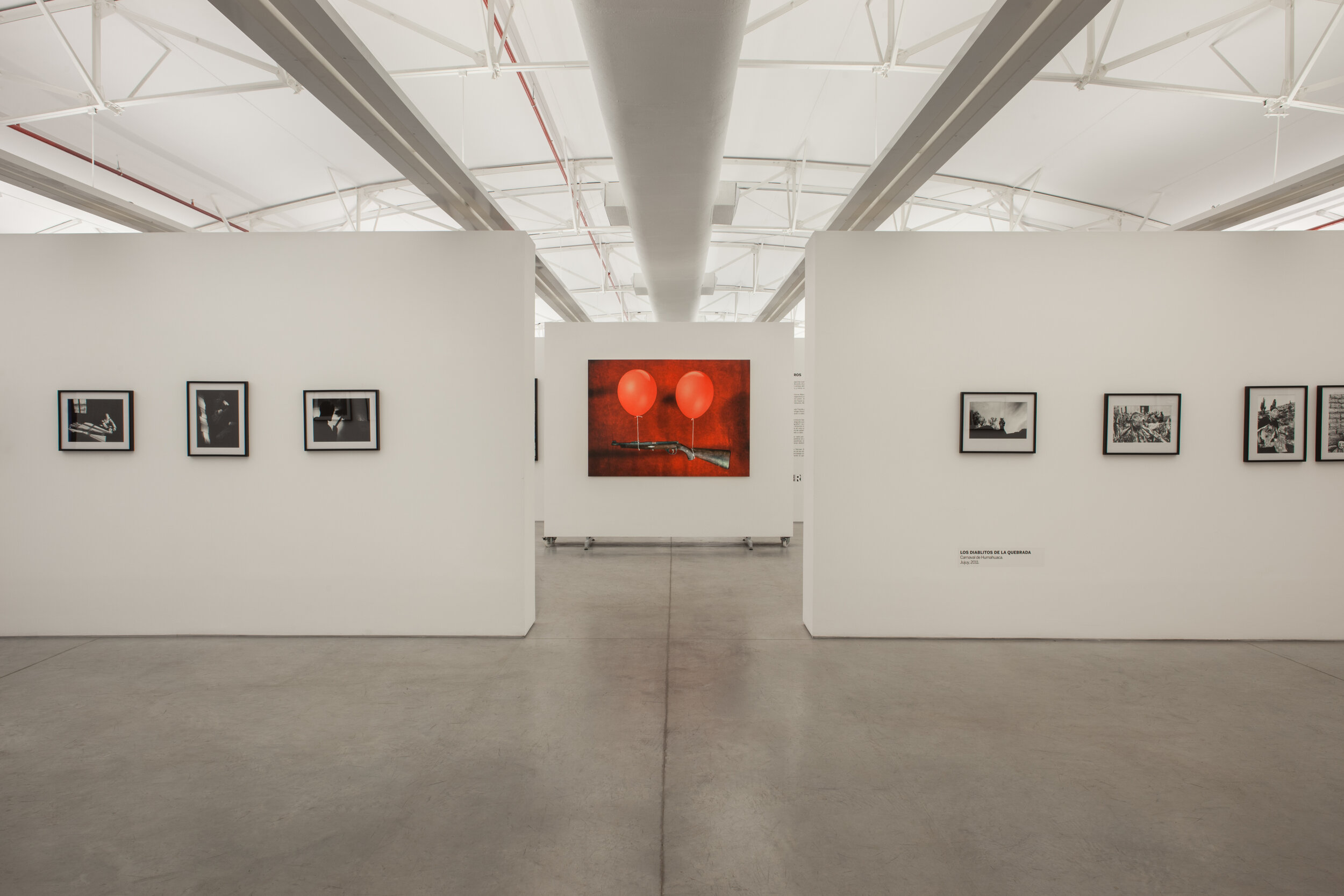An Interview with Gastón Delau, director of FOLA (Fototeca Latinoamericana)
Buenos Aires, August 2017. Interview with Luz Hitters.
Photography by Juan Hitters.
FOLA is Latin America’s photography hub, bringing to porteños and the thousands of tourists that visit Buenos Aires over 200 artists from 12 different countries. FOLA aims to promote various photographers that make up an ample spectrum of techniques and boarded subjects, thus stimulating the cultures present in Latin America and the expression of artists across the globe. The institution is an indisputable success, having filled a niche that was highly demanded in the Argentine market.
We had the honour of interviewing Gastón Deleau, the director of the project, who very generously received us and told us about the work behind the success.
What was the path that lead up to directing a photo library of such magnitude?
The photo library is born by chance from a love of photography, but its crystallization was completely casual.
The story starts in 1988. I was 19 at the time, when I started working as a subscription salesman for an art magazine. Those were my first ties to the artistic side. I was studying marketing and publicity. In this context I began to realize the value and power of an image. After that I started working at Walter Thompson and at BBDO, two important communication agencies. There I understood that I am not creative but I have sensibility. I always befriended the art directors and creative directors, spent my free time with them and not the account executives. I worked with David Ratto, an eminence of publicity in Argentina, as well as with the Mollá brothers, who nowadays own a multinational publicity business called ‘La Comunidad’. As I was telling you, I was always aware of the importance of imagery and communication, and I think there is a lot of that in art. Me, on my own, can not grab a camera or a blank canvas and paint something; I get stuck, I get clouded, I get blocked. But, If I see something that is good and has a message to relay, I can tell.
So started a carreer that, save for that seven year interim at Walter Thompson and at David Ratto, I did hand in hand with ‘Arte al Día’ editorial until the year 2000 when I proposed my first render to Diego Costa Peuser, with what I imagined taking the magazine to different events and media outlets should be. I started thinking then in what way art and business could coexist; how to support it sustainably on a business level. In exchange for support, we promoted and propagated ideas, managing to produce first the Gallery Night, then Art Week and in 2005, Buenos Aires Photo. With this last event I begun to integrate myself more to the business of photography, specializing in since I identified myself with the photographers and friends I had made in the industry. So, very naturally, along came a collection of around three hundred Latin-American pieces, thanks to traveling and fairs, that had the potential to create something more. Casually, someone asked me if I had a dream, and I, who could have answered anything else, such as playing rugby professionally, which had been my dream for many years, answered that I wished to found a photography museum, or some space dedicated to imagery. I was very aware of my financial reality and my impossibility to carry out such a project on my own, so I said ‘I don’t know if it will be the first, since it could take me twenty years, but if it’s not the first, then when I do it it will be the best.’ He mentioned that they might be able to help and so FoLa was started.
He gave me an address, Godoy Cruz 2620. I was lead up a broken, dirty staircase, until I saw this 1220 square meters esplanade, completely empty. At first I thought it was a joke, the shopping centre was immaculate, and ready for opening in three months. It could not be true that that space had been waiting for me.
I was lucky to say something at the right moment to the right person. They were not waiting for a museum, but they were waiting for something different. So I had a meeting with the people at IRSA, I told the story to Eduardo Elsztain and his wife Marina, and thanks to their support and their faith in the project we were able to see it through. Previously, they were also sponsors for Buenos Aires Photo with their different shopping centers so that we could bring an artist from overseas, and the ten year long relationship we had established gave its fruits since I earned their trust. I presented a business plan to prove how I would support the project, they would donate the space but they daily costs are high. Between sponsors and the Association of Friends, the plan was approved.
Nowadays, FOLA is turning two years old and we are happy with the project. We have brought artists such as Vivian Maier, Graciela Iturbide and Chema Made. We could say that aside from the work and the vision, we were also lucky.
What is the selection criteria for artists and pieces? Do photographers contact you to show their work or do you arrange the move over here?
It is worth clarifying that the pieces that were bought and are patrimony of the foundation are all from Latin-American artists, but the expositions are not limited to Latin America. The aim is that as the FoLa collection grows, the artists will indeed be Latin-American since that is the spirit of our space.
As far as the exhibits, we attempt to bring pieces selected because of their excellence, even if that is a subjective criteria. Our idea is that the beginner artists, the intermediate artists and those that are consecrated all have their place. We try to be facilitators, creating a section for young artists, an intermediate section where a program of Latin-Americans are invited which is being curated by Nicolás Janowski and a selection of artists of greater trajectory.
The showings in the big room, where the main artists are exhibited, are three months long, which gives time for a lot of people to come.
When you are this exposed, you take on more that you would like since there are more times that you say ‘no’ than times that you say ‘yes’. I have two people of trust that are Nicolás Janowski, as I was mentioning, and Pablo Cabado, with whom I consult.
Proposals abound since we have four projects in the big room and six projects in the other too rooms. Furthermore, with virtual platforms and the visibility we gain through them, it gives access for anyone to send you anything. I personally answer all artists who send us material. If something sticks with me, I have a folder where I separate them in case someday their work can tack on for someone. What I separate I share with Pablo and with Nicolás since they, more than me, are involved in other things throughout the world, and they might be perhaps missing out on something good that may be useful to them.
Nonetheless, he has told us that in certain cases he has met artists whom he has then invited to show their work after seeing their photos, financing the development of their work in Buenos Aires, the living arrangements and the subsequent exhibition, such as Andrés Durán. Although Gastón receives many proposals, he assures us that he discards no-one. He can always be surprised, and being there space for beginners and masters, there is a chance for everyone. He sustains that if it is meant to happen for you, it will happen for you.
Does the photo library provide any cultural activity aside from the exhibitions?
Besides our exhibitions, we have workshops that are always related to themes of photography and imagery. We try to do workshops with the guests we have. For example, we just did a ‘photobook’ workshop with Alejandro Cartagena, as well as one with Ariel Authier called ‘La Cámara de Cristal’. We also review portfolios and book presentations, such as Sara Facio’s. For every exhibit we try to have a talk with the artists so as to generate a connection with the audience.
Going back to the photobooks, this year we are doing in November the Clap Project. It’s a project that’s been done in New York with three very famous American collectors of photobooks, where a jury of 20 people selected the 130 most important photography books in all of Latin America. We will be bringing this 130 books here to Argentina on November 29, as it was done in Houston and at the Aperture Foundation in New York. At the same time, we formed a committee where the 50 most important books of 2017 were selected. In this way, we will have the Harry Grant Olds exhibition, a historical archive and in the middle of the room we will showcase the Clap Project books and the FoLa 2017 election.
This gives us the kick start since FOLA started this year its own editorial, named ‘Photogramas’ and we are editing five books that we will present there. They will be selections in commemoration of exhibitions we have done. This year there will be five publications, which are currently being printed, from Gabriela Iturbide, Pablo Cabado, Miguel Calderón, Alejandro Cartagena and Pablo López Luz.
Do you have ties to other photography museums in the world? Do you take part in any sort of exchange?
Alliances are attempted to be made with other museums or institutions. Two concrete ones that I can mention are the one from Rodrigo Abd that came about with the CDF (Centro de la Fotografía de Montevideo) and that one with Photoespaña regarding the work of Alberto García-Alix. I wrote to Daniel Sosa, the director of the CDF, about our interest to bring the exhibition to FoLa, we came to an agreement and so they lend us the exhibition. With Photoespaña we have a project that will show a retrospective on their guest curator for 2017, García-Alix, here.
How are the high costs of moving the pieces, assembly, presentations, etc. financed? Do you receive some sort of governmental assistance for promoting national culture?
FOLA can carry on living thanks to sponsors, patronages, people who buy tickets to come, donations and various activities we generate so that the program works. We are financed mainly through help and acquaintances. Embassies, such as the American with Vivian Maier, the Spanish with the Alberto García-Elix show and the Mexican with the exposition by Graciela Iturbide, also help out a lot. Always, when you are bringing important things, embassies are willing to cooperate because they believe in their artists. Another case is with the Mexican Foreign Relations Secretary, when they learnt of our desire to have a Miguel Calderón exhibit.
On the local level, Mecenazgo, the cultural promotion program, is very important. The times we have applied with projects they have given us the funds and everything flowed perfectly. The Metropolitan Fund has also helped us.
The Friends of FOLA Association has gathering people with the sensibility to support non profit institutions as its aim. There are five options: artist friends, benefactor, protectors, long distance friends and corporatives. Each option has different benefits. Protectors receive each year a photo by an artist chosen with FoLa’s validation. Corporatives receive invitations and VIP passes to distribute.
Is art sold at FOLA? Or is it a non profit museum?
Nothing that is exhibited is for sale since FOLA’s aim would then be missed, but I know that in certain cases pieces have been sold afterwards. At times, I’ve acted as a facilitator between both parties.
As for sale, we only sell photobooks to that end, and we will be inviting five artists a year to do portfolios. I am not in charge of the selection. With the ‘Photogramas’ label we will be creating special editions with various photos in digital formats, printed in hahnemühle paper, certified and with the history of the project. We will include gloves inside the portfolio so that the pictures can be handled without being marked.
When photography has become such a brutal commodity and in the face of so much visual invasion, how can an image have value?
I think that those who have a story to tell will prevail, those whose visual narration has a discourse that can be seen throughout the entire production, not simply a one-shot that creates a beautiful picture. They have to be authors that want to tell something. I’m realizing that lately I am drawn towards documentalist profiles, that vision of the market. The anchoring in narration is essential. It has to move something in you.
What are your next projects? Could you tell us, if possible, what exhibitions await us at FOLA this year?
Coming soon we will show ‘La Cámara Afgana’ by Rodrigo And, a consecrated argentine artist. I am leaving for Montevideo on August 2nd to personally brin the exhibit. It will open on August 23rd along with that of Alberto García-Alix, a spanish artist. Next year we will bring Walker Evans and Jim Dow, two americans.
When the interview was concluded he showed us a preview of the mentioned portfolios and photobooks, the sublime papers on which they print and how delicately they are assembled. We thanked him for his time and even more for the manner in which we were received. He reiterated multiple times that we should not hesitate to stop by the photolibrary if we are ever in the are, and that their next exhibition is not to be missed. We do not doubt this, for we have never left this place disappointed.










